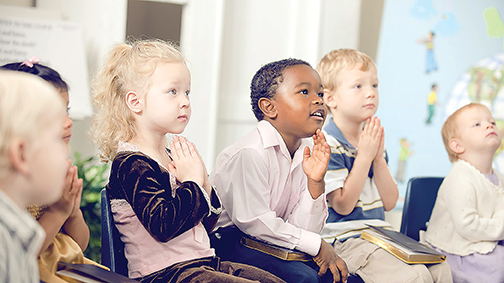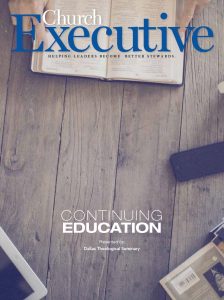
By Dr. Jay L. Sedwick
![]() I’m driving home from the church, listening to the radio for traffic information, and the top-of-the-hour newscast leads with the headline: “Local Minister Arrested for Sexually Abusing Numerous Children.”
I’m driving home from the church, listening to the radio for traffic information, and the top-of-the-hour newscast leads with the headline: “Local Minister Arrested for Sexually Abusing Numerous Children.”
Oh no — not again, I think to myself. My heart sinks in my chest.
I wonder, How can this continue to happen, again and again? And a minister … in a church … who is supposed to lovingly shepherd the flock, not hurt them. What is wrong with people?
I know the answer is sin. But, the nagging question is, why aren’t we doing a better job of preventing this from happening in our churches?
Child sexual abuse is a crisis in our society. Current information indicates that 1 in 4 females were victims of sexual abuse when they were children. What surprises many is that 1 in 6 males were also victimized during their childhood.
The Roman Catholic Church has been ordered to pay millions upon millions in damages to victims and their families in an attempt at restitution. However, no amount of money can assuage the severe psychological damage done by such a horrendous act of violence against the most innocent in our midst. No denomination has been spared the pain and agony of the effects of child sexual abuse. The Baptists, Lutherans, Methodists, Presbyterians, Episcopalians, Non-Denominationals, et al, have all had ministers perpetrate heinous acts of sexual abuse on children. In fact, Church Law and Tax recently published a chart showing that sexual abuse of a minor was the No. 1 reason churches ended up in court between 2011 and 2015.
 Why does it seem like lately many occurrences of child sexual abuse in the news are tied to a church environment? I believe it’s because churches, their parishioners, and many of their staff think it will never happen in their congregations. Given what we know, that is foolish thinking.
Why does it seem like lately many occurrences of child sexual abuse in the news are tied to a church environment? I believe it’s because churches, their parishioners, and many of their staff think it will never happen in their congregations. Given what we know, that is foolish thinking.
The majority of organizations that serve children and teenagers throughout our country — the Boy Scouts and Girl Scouts, for example — have been forced to address this issue head-on as a result of perpetrators within their ranks committing sexual abuse crimes against children. These organizations have made it much more difficult for sexual predators to access their kids.
However, contrary to what many might think, child abusers are highly intelligent and have realized that churches can be targets. The right steps should be taken to help prevent this from happening.
Several organizations have worked hard at developing a series of policies and procedures to prevent child sexual abuse. The most common procedure is running a

criminal background check. Undertaking this check has become a ‘standard of care’ for those providing services to children, but is rarely adequate for identifying perpetrators of child sexual abuse; the check will only find them if they’ve been convicted. Based on our experience, the typical child sexual predator already has multiple victims before getting caught and convicted.
Another common procedure is to have an identity verification check-in / check-out system in place to make sure no stranger gains access to the children. However, 90% of victims are abused by trusted individuals who are known to them, often family members who can penetrate the check-in / check-out system, or “trusted” staff members of the church. “Stranger Danger” accounts for relatively few cases. Following the two-adult rule and making sure that every door has a window to eliminate privacy (other than restrooms) can be helpful, but this has limited effectiveness, as well.
Gregory Love and Kimberlee Norris, founders of MinistrySafe, have handled hundreds of sexual abuse cases throughout the nation, and have identified the “grooming process” that child sexual abusers use to gain the trust of their victims and the people around them. The six-month waiting period alone will not protect children in ministry programs. The key to preventing child sexual abuse is to know, understand and be able to identify the characteristics, patterns and traits of the offender’s grooming process.
Recently, Dallas Theological Seminary partnered with MinistrySafe to educate others about a complete child safety program. Beginning this academic year (2016-2017), every entering student in all degree programs is required to complete MinistrySafe Sexual Abuse Awareness training before graduation. This satisfies the State of Texas mandate (and mandates of other states, as well) for anyone serving in a camp or similar environment that has access to minors. A 3-credit-hour online course with visiting professors Gregory Love and Kimberlee Norris of MinistrySafe is also being offered this spring for the very first time.
Dallas Theological Seminary has decided to be very proactive with this issue to better equip graduates with the tools to face the serious challenge of preventing child sexual abuse in the church. Every church has an obligation to provide the safest possible environment for the children and youth that God has entrusted with their care.
Most importantly, the church should remain a safe place where our children can encounter the God who loves them so deeply.
Dr. Jay L. Sedwick is Professor of Educational Ministries and Leadership at Dallas Theological Seminary. With more than 30 years of youth ministry experience, he serves on the board of the Association of Youth Ministry Educators and currently serves as president of the board for the Society of Professors in Christian Education. An ordained minister who teaches youth at a large Dallas-area church, he is also a popular conference and seminar speaker.


